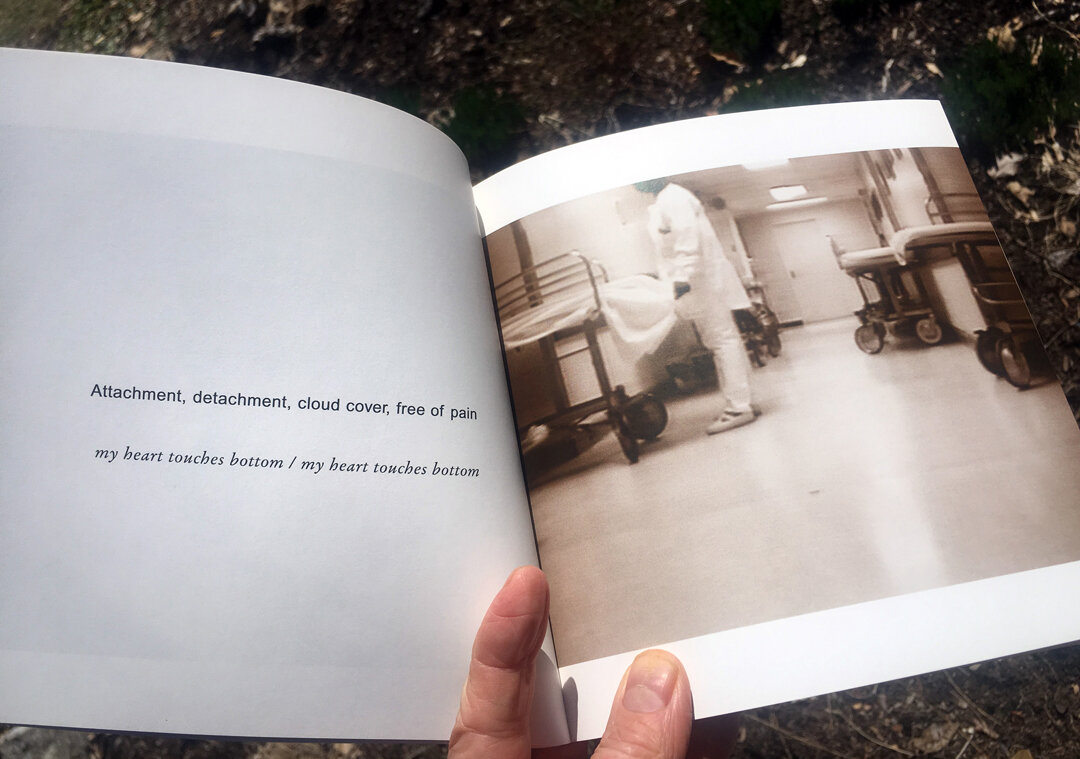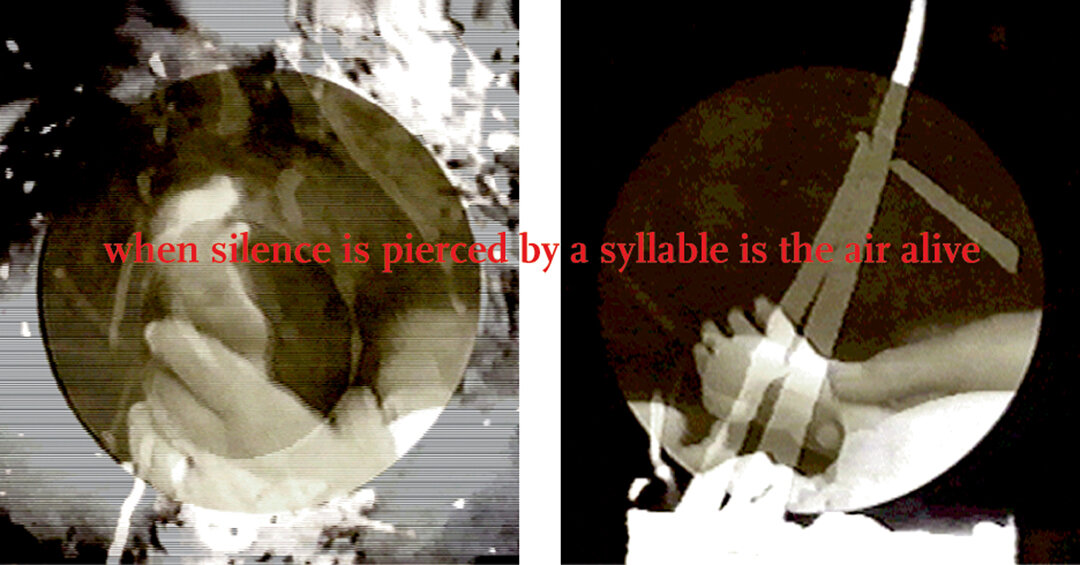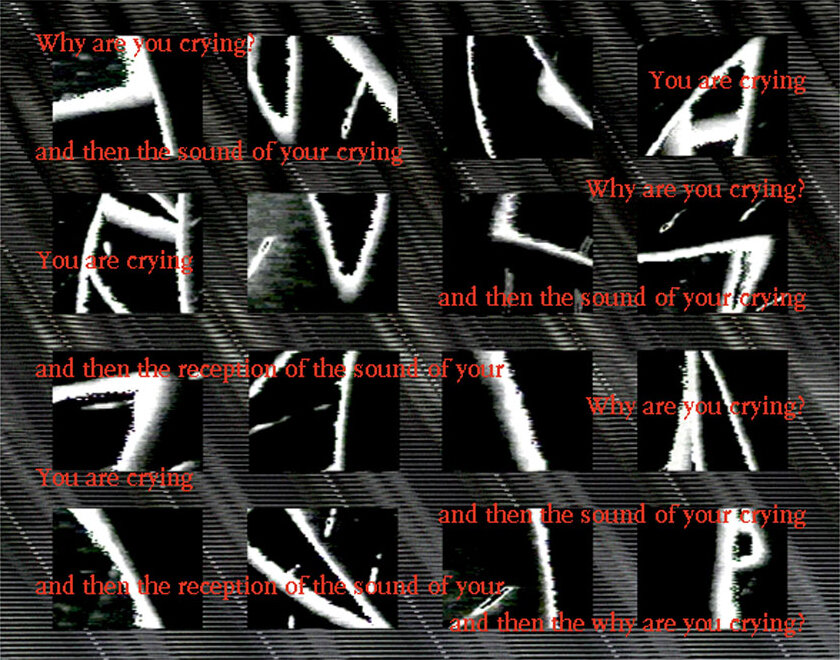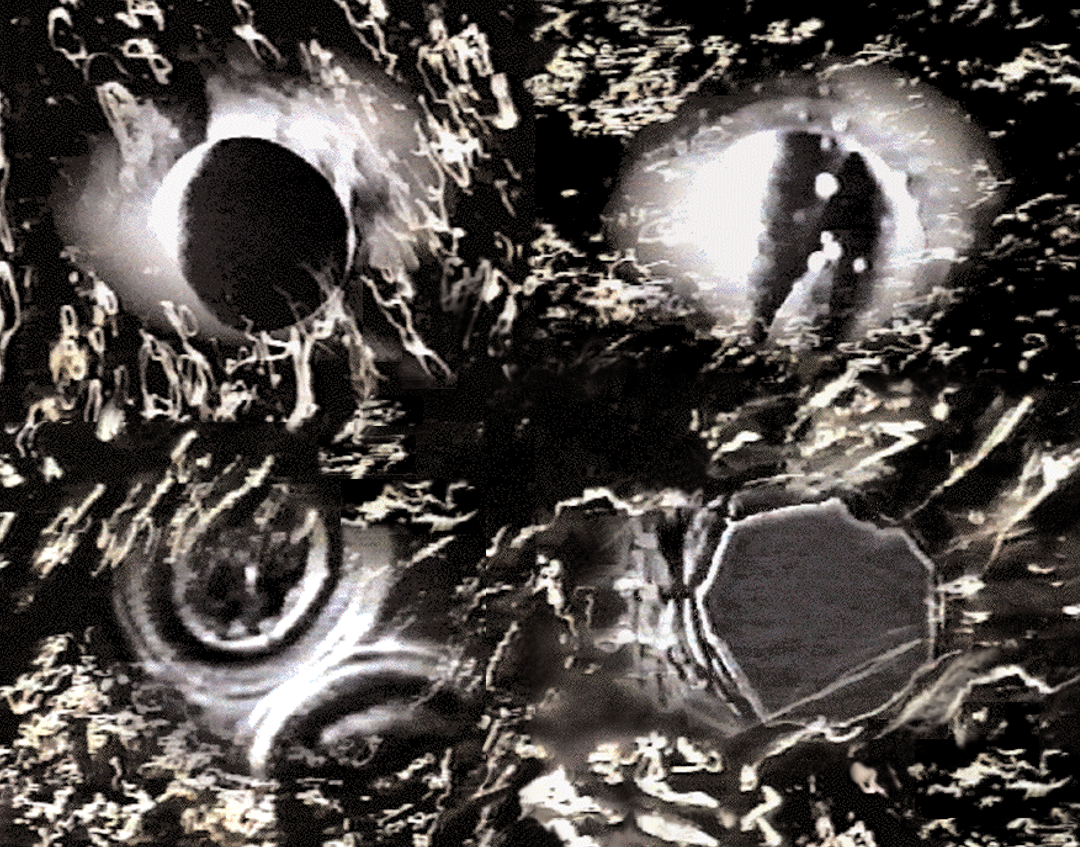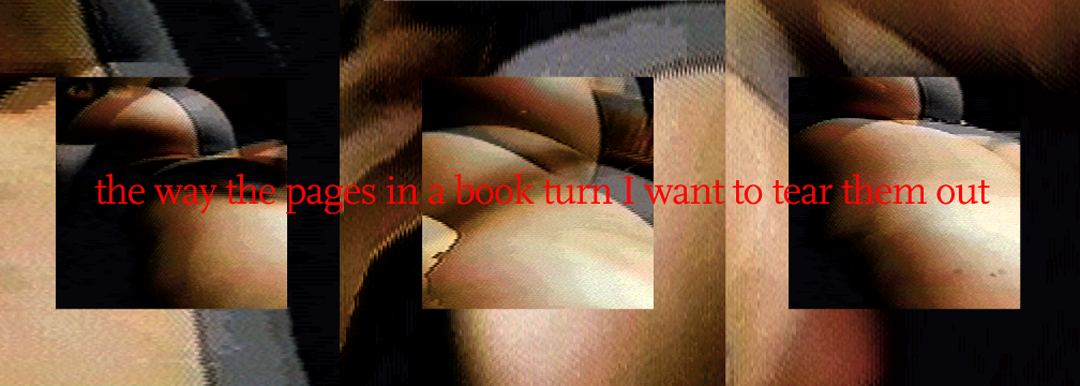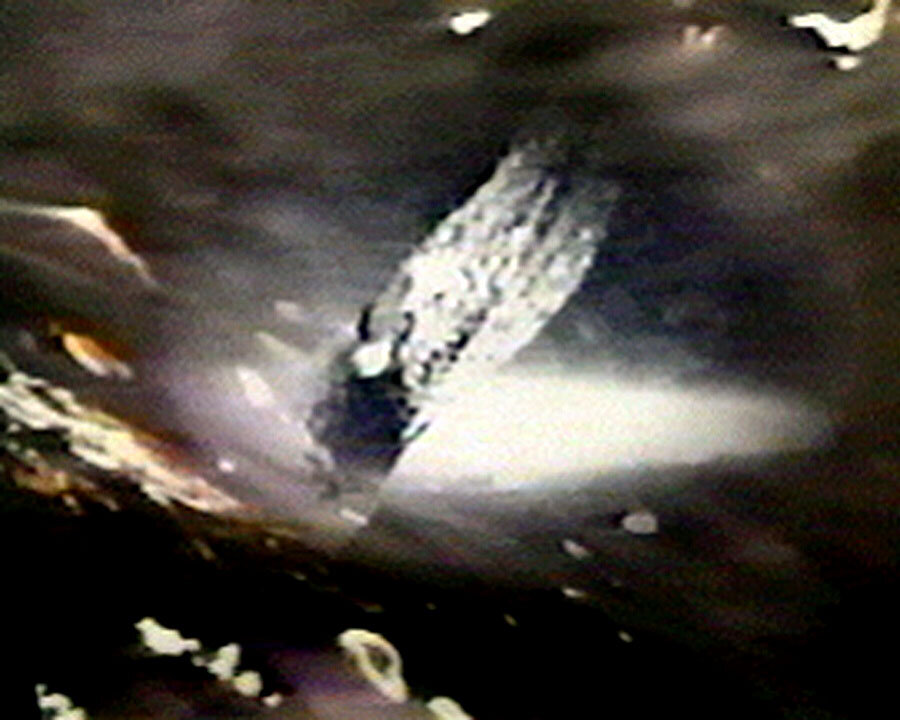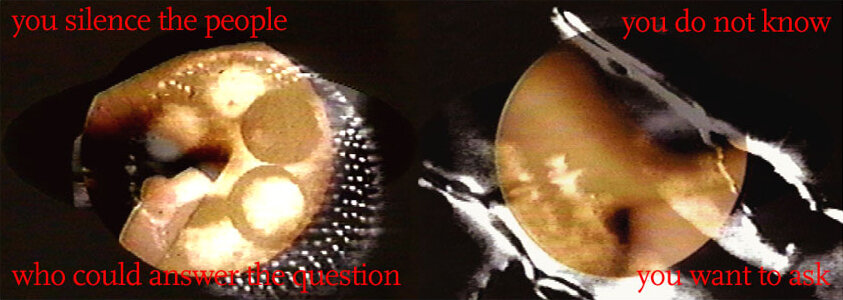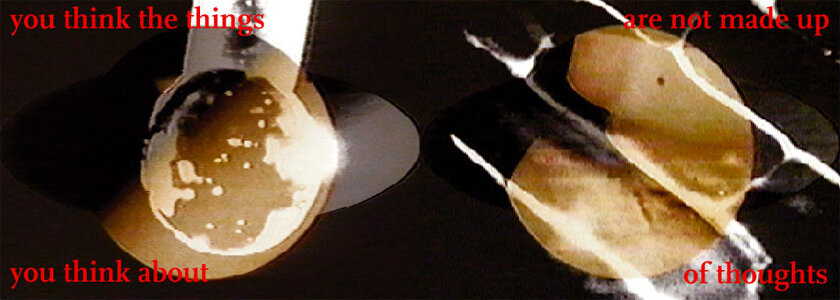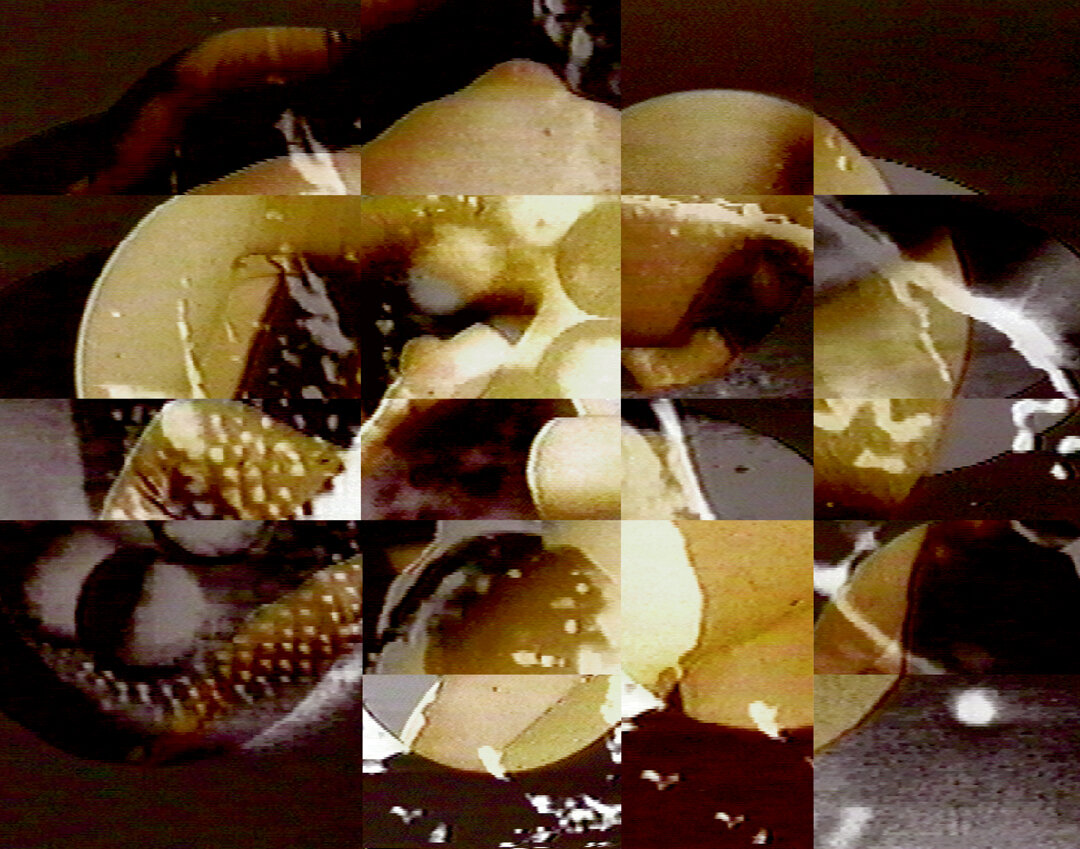ARTIST BOOKS 1997, 2001 (Scroll to view all projects)
Debtor’s Prison
Debtor’s Prison was published by Granary Books in 2001 as a collaboration between poet Lewis Warsh and visual artist Julie Harrison in an edition of 1000.
Debtor’s Prison, Julie Harrison & Lewis Warsh, Granary Books, 2001
“Debtor’s Prison is a call and response exploration of text and image. It is a collaboration between novelist and poet Lewis Warsh, and video and visual artist, Julie Harrison. Together, they create a dialogue between Harrison’s eerie video stills and Warsh’s somber text.
“Harrison’s images are taken from her performance and documentary tapes made in the 1970’s. The sepia toned stills show blurry images of faces and hands, hospital equipment, and religious icon paintings. The most arresting photographs are a series of a naked woman submerged in a bathtub and wrapped in a tangled mess of plastic tubing. The grainy images cover the pages on the right hand side, drawing the eye into a very intimate space with its subject; the wrinkles of the woman’s neck, the laughing mouth, the wet breast, her thigh on the edge of the park bench.
“On the left pages of the book sits Warsh’s text. In the middle of each page is a line of poetry, below and indented to the right sit two italicized phrases separated by a backslash. Warsh’s text seems to be composed in response to Harrison’s images, though the correlation between the two is not always clear. In the first section of the book, (it is broken into 10 chapters, as designated in descending order by photographs of the numerals 10 through 1) Warsh writes:
Her thoughts are like a series of windows covered with dust
arable soil / mental picture
“This line describes just what Harrison’s images seem to be. Blurry and grainy, sometimes indecipherable, the pictures appear to be dust covered windows into someone’s mind. The reader takes on a voyeuristic role, as if seeing the world through someone else’s eyes, allowed to look into a secret or hidden place where one is not usually granted access to gaze.
“This book is a hermetic piece to be enjoyed for the act of reading. Granary Books is known for honoring the book as a unique and sacred object, each one carrying its own aura. Debtor’s Prison is a work to be enjoyed for the experience it offers; to let the words dissolve under one’s tongue and the images float beneath one’s lids.”
If It Rained Here
If It Rained Here was published by Granary Books in 1997 as a collaboration between poet Joe Elliot and visual artist Julie Harrison (me).
If It Rained Here, Julie Harrison & Joe Elliot, Granary Books, 1997
Steve Clay of Granary Books was the matchmaker, putting two people, who compress large ideas into bite-sized fragments as a stylistic choice, together—Joe with words, me with images. Working with digital images was fairly new for me at the time. I had begun creating a series of images, all of which were captured from video that I produced at the E.T.C. as an artist in residence, utilizing multiple source systems (video cameras, image processors, colorizers, analog control synthesizers, and computers) to experimentally manipulate and process video. The female body had been an inspired source in my work for some time, the body as a vessel, or container of the Other, and I had recently given birth to Ruby, my firstborn, and was pregnant with Naomi, my second child. Joe was a new father as well, and we were both immersed in parenthood in that special way that new parents are, completely overwhelmed and trying to figure out a way to reclaim ourselves, our work, and keep our sanity.
Joe is so generous with his words; he gave them to me freely, like they were snacks. We would meet once a week at a specified time, and I’d show Joe what I’d worked on that week, we would chat about stuff, anything at all, really, as we didn’t know each other very well at that point. Discussions about the work were woven into our daily minutia. Then Joe would go home inspired and write stuff based on what we talked about, bring it back the next week, we’d talk some more, and so on. Video (and art-making) is a time-based medium, which seemed important to me, I felt like I wanted to weave time into the pictures.
One way I thought to save money was to print the entire book myself, which I did. Binding it was particularly tricky, but Daniel Kelm came up with an ingenious way to recess the pages so that the prints wouldn’t rub on one another.


